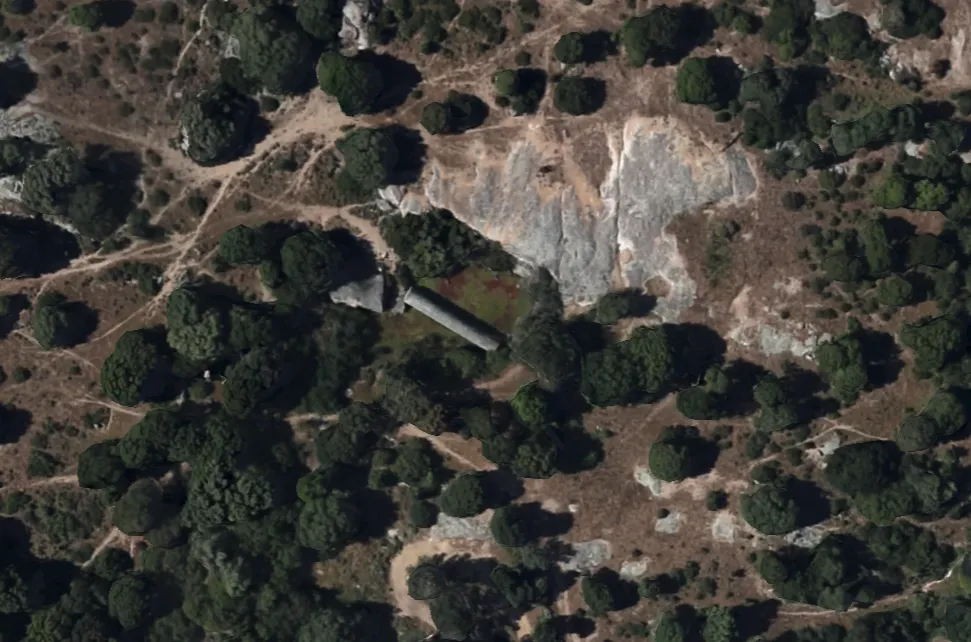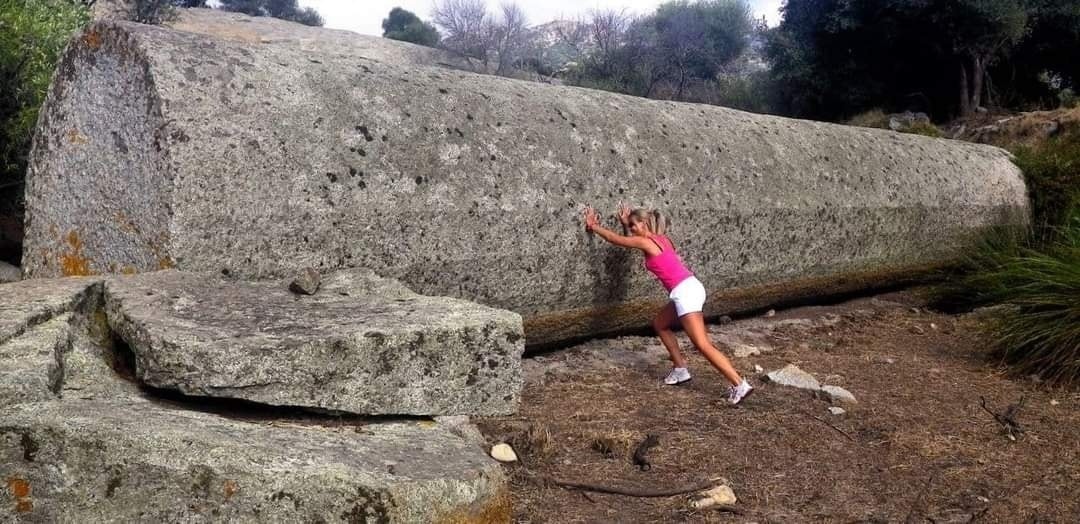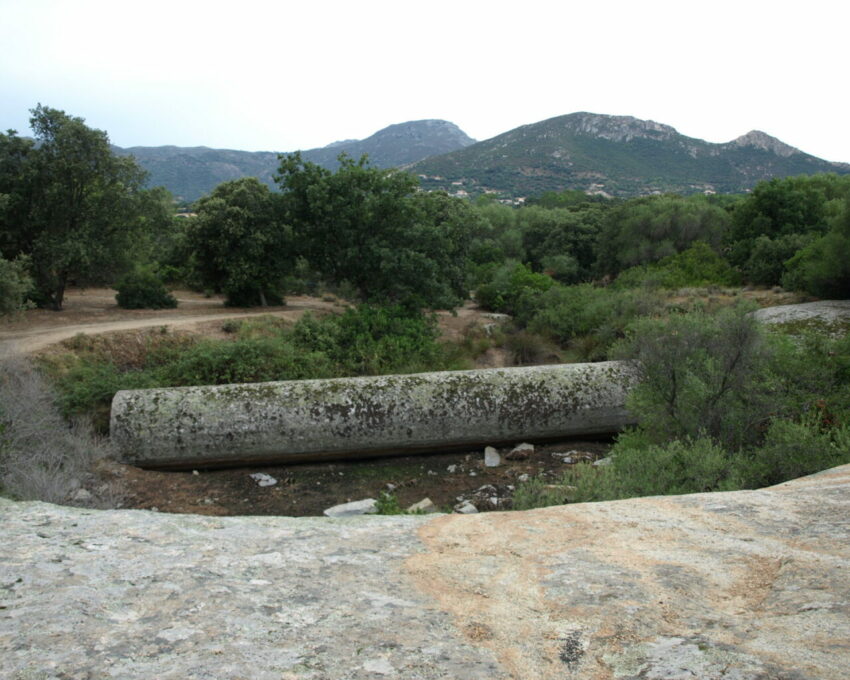Overview of the Monolithe de Corbara
The Monolithe de Corbara, also known as Monolitu d’Algaghjola, stands as a significant geological and historical artifact. This monolith, carved from a unique type of quartz syeno-monzonite, measures 17 meters in length and 3 meters in diameter. Remarkably, it weighs about 272 tons and features 32 faces. Geologists and historians recognize its composition for the large, clear crystals of two types of feldspar—microcline and plagioclase—and smaller crystals of biotite, amphibole, and pyroxene.
Location: Monolitu d’Algaghjola, Spilonca, 20256 Corbara, France
Get your dose of History via Email

Historical Significance and Current Status
Originally quarried between 1835 and 1839, the monolith was intended as the base for a monumental statue of Napoleon in Ajaccio. However, due to financial constraints, the project was abandoned, and the monolith has remained in its original location ever since. Today, it lies near the ruins of old quarrymen’s houses, close to a service station on the RN 197 road, about 2 km from Algajola towards Ile Rousse.
Geological and Educational Value
The Monolithe de Corbara is not only a piece of Corsican history but also a valuable educational resource. It allows for the study of mineral paragenesis and offers insights into the geological characteristics of the region. The rock type from which the monolith is carved, often referred to as “Algajola granite,” was popular in the 19th century for ornamental purposes, contributing to various significant structures, including the Medici chapel columns in Florence and the base of the Vendôme column in Paris.
Conservation Challenges
Despite its historical and geological significance, the Monolithe de Corbara currently lacks any formal protection status and sits on privately owned land. The site faces natural threats such as erosion and is somewhat overgrown, which complicates preservation efforts. The lack of active conservation measures and the monolith’s location on private property pose significant challenges to its preservation.

Local Impact and Future Prospects
The community of Corbara, while recognizing the monolith as part of its cultural heritage, has not prioritized its conservation. Proposals to elevate the monolith and enhance its visibility have surfaced over the years but have not been realized. The future of the Monolithe de Corbara remains uncertain, as it continues to rest in a field, a silent witness to the passage of time and the shifting priorities of those around it.
In conclusion, the Monolithe de Corbara is a remarkable artifact that encapsulates both the natural beauty and complex history of Corsica. Its preservation and proper utilization could offer significant cultural and educational benefits, yet it requires concerted efforts from both local authorities and the broader community to realize this potential.
Sources:
Direction régionale de l’environnement, de l’aménagement et du logement de Corse
Photo Passions
Photo Credit


Unbelievable just fantastic Civilization before us